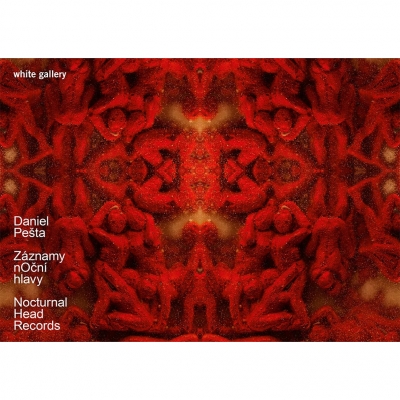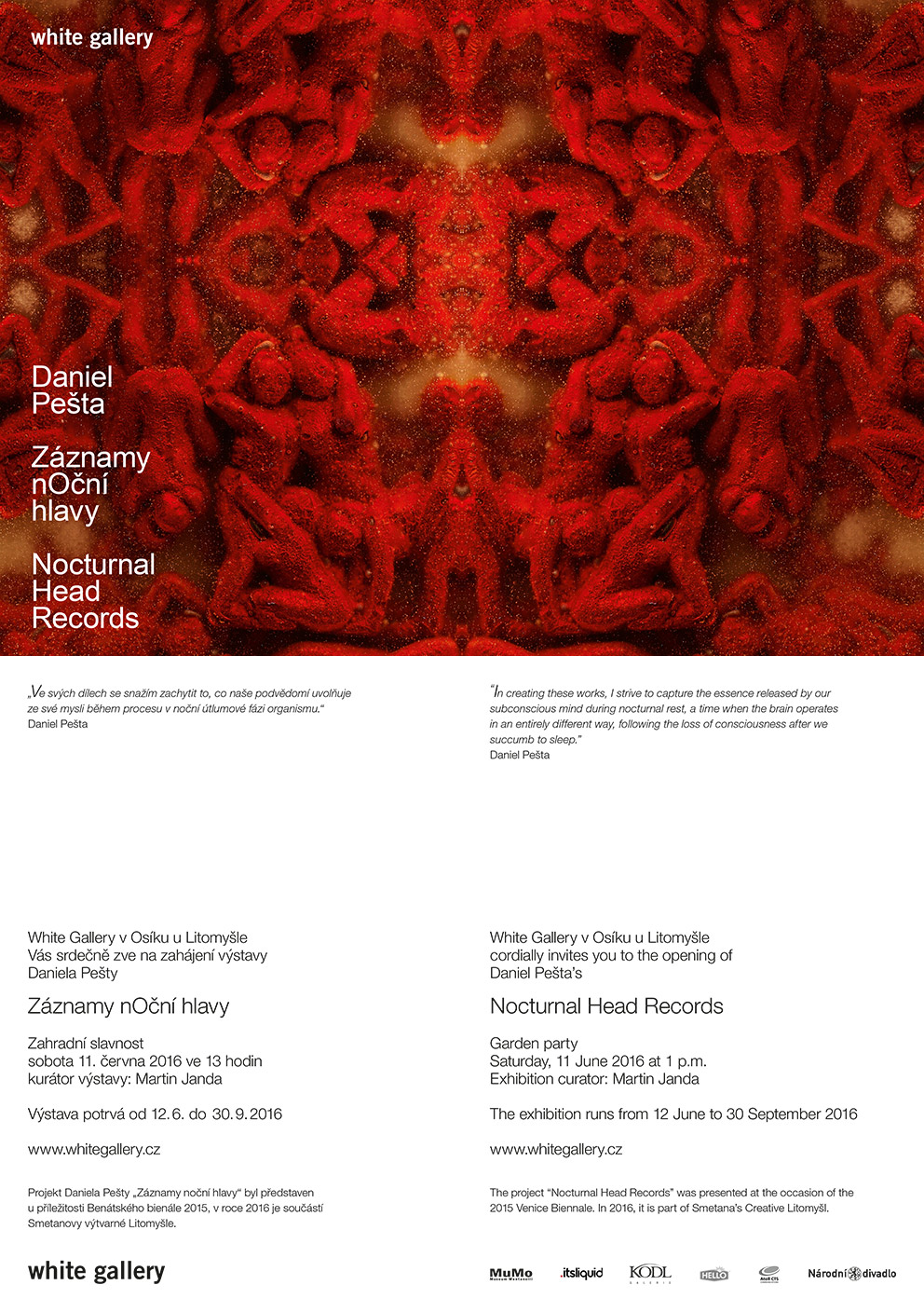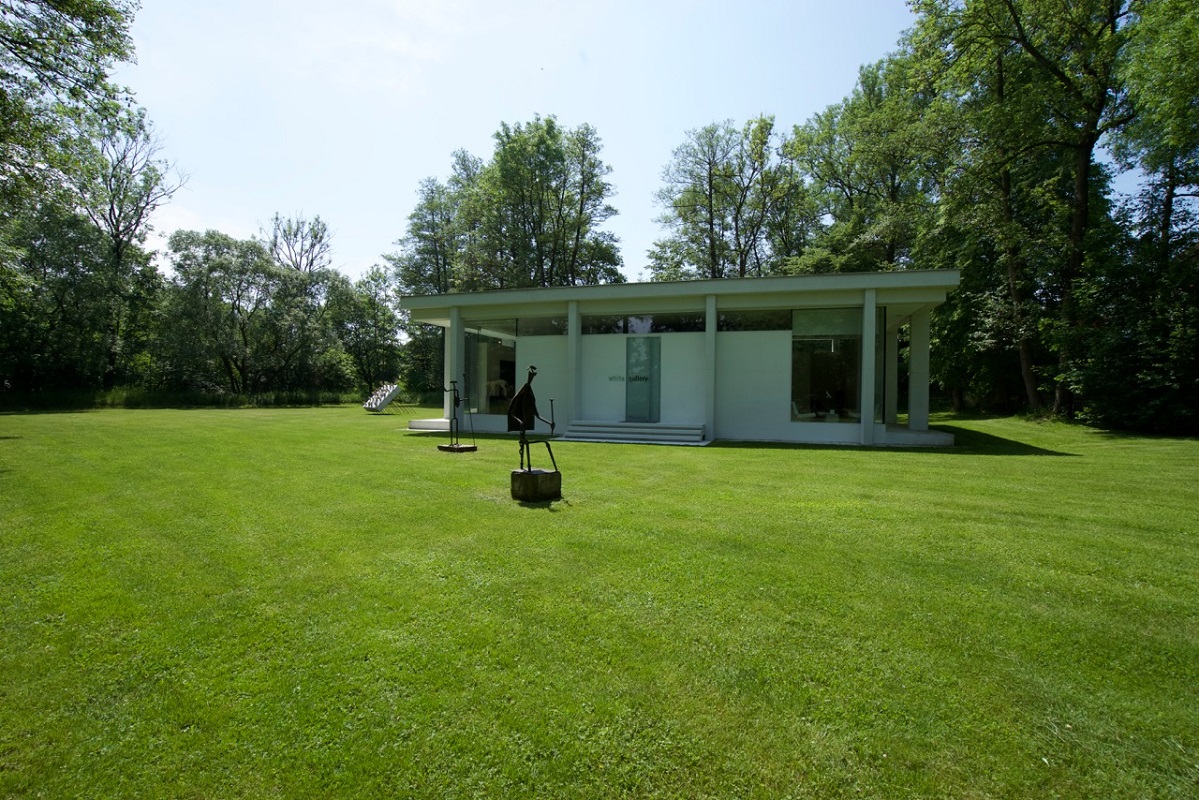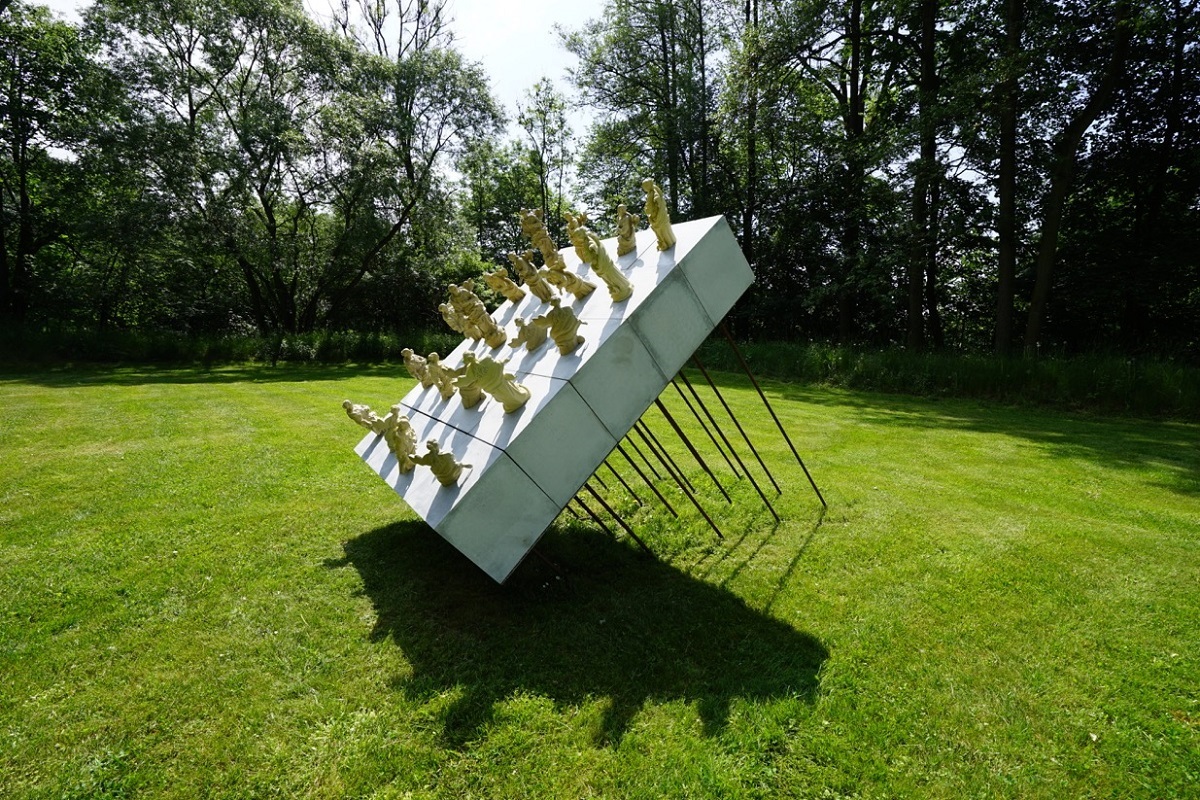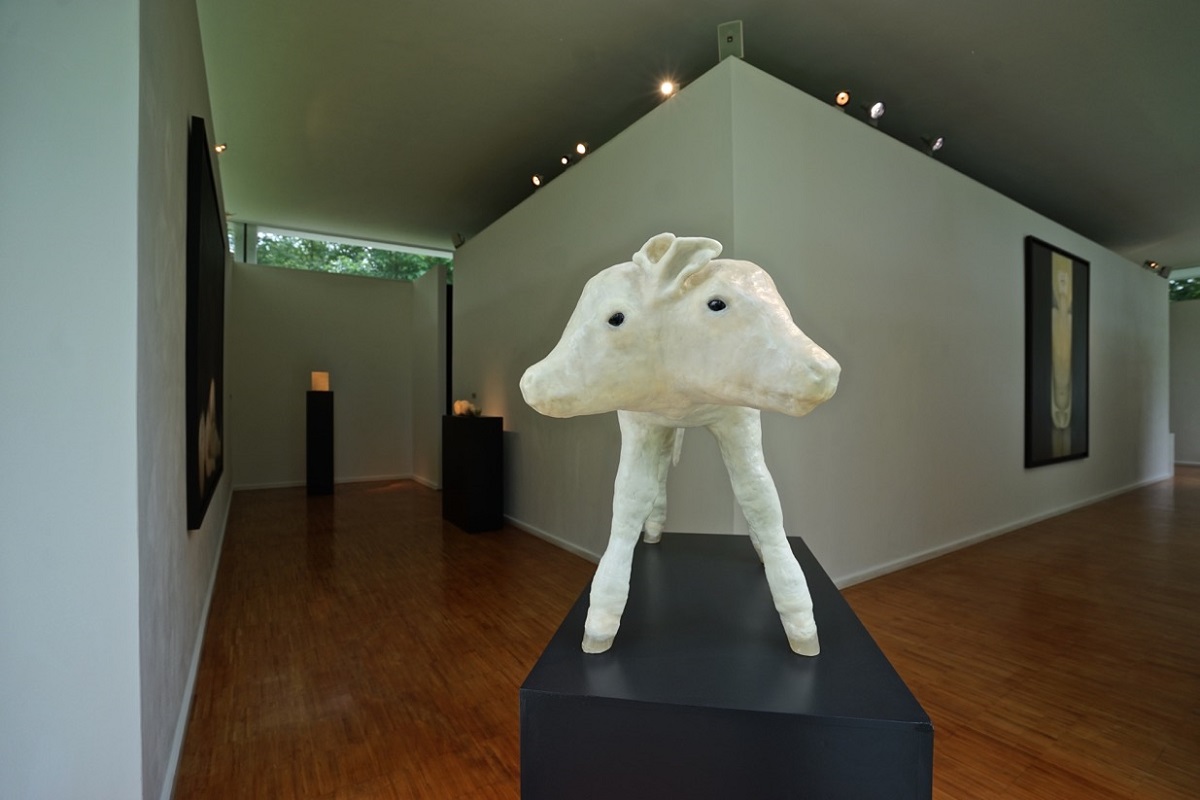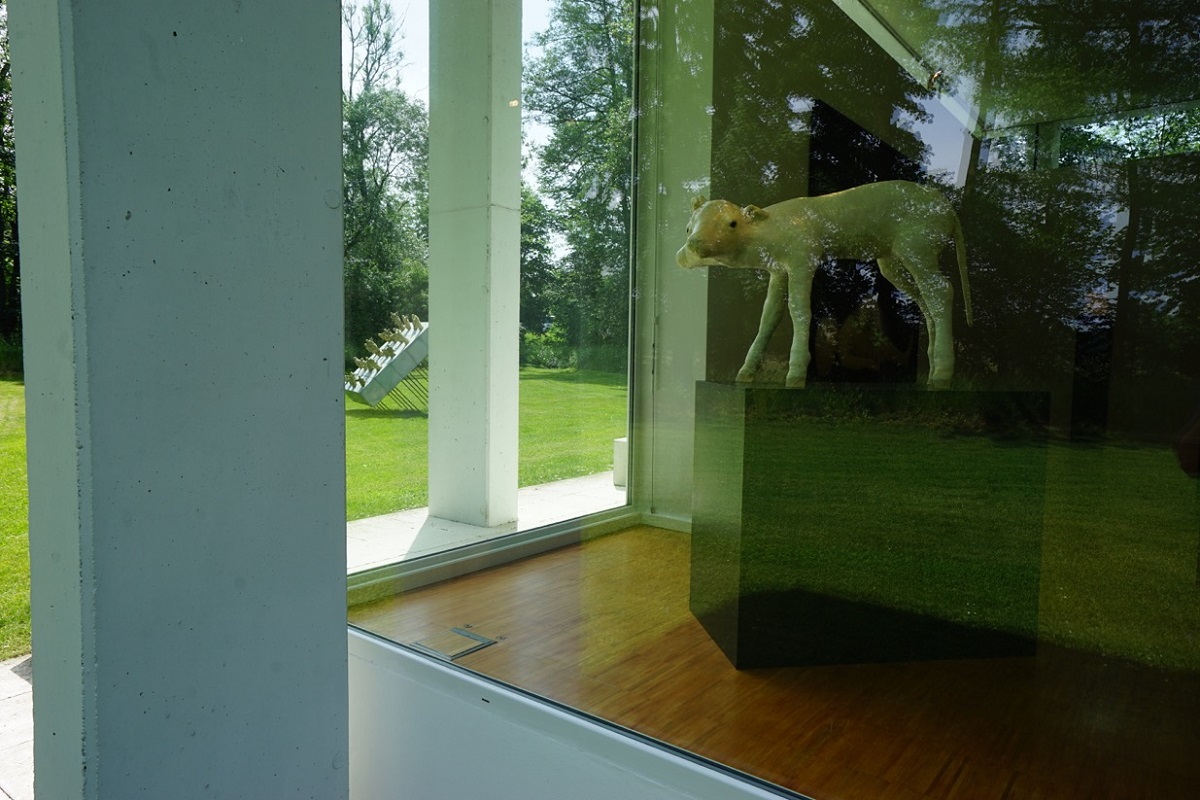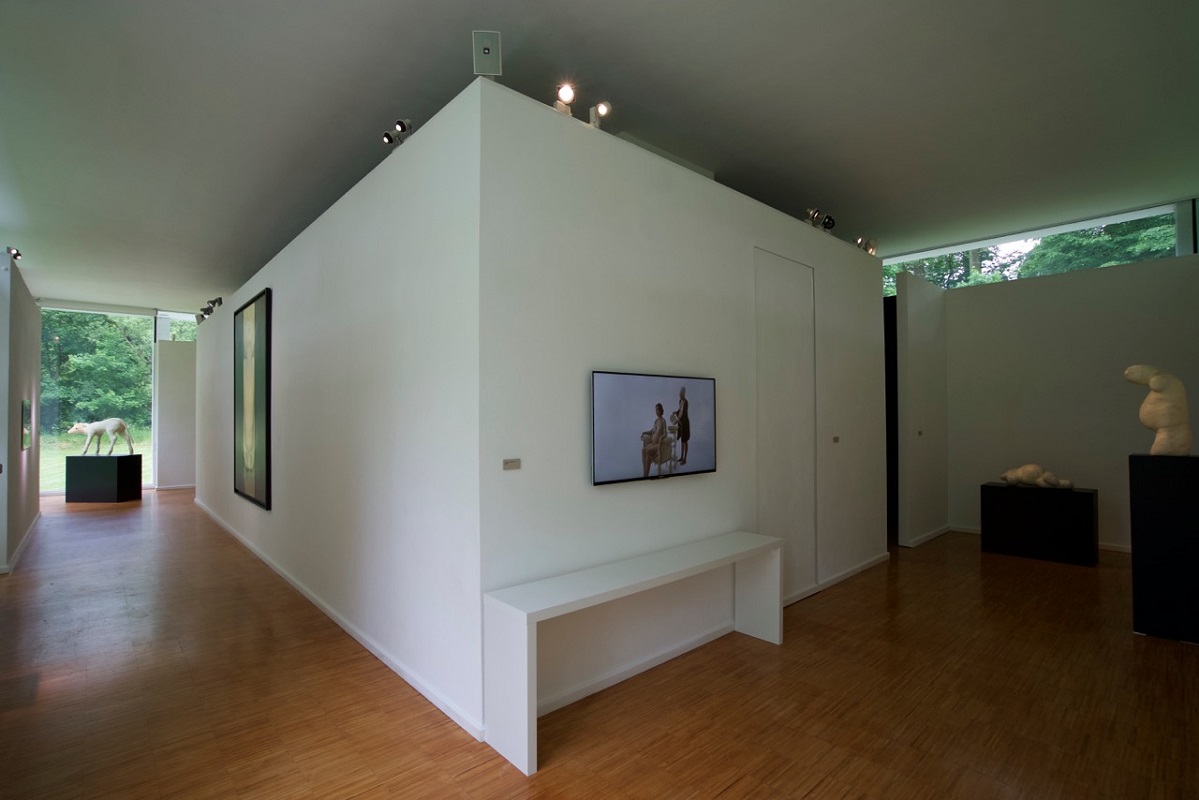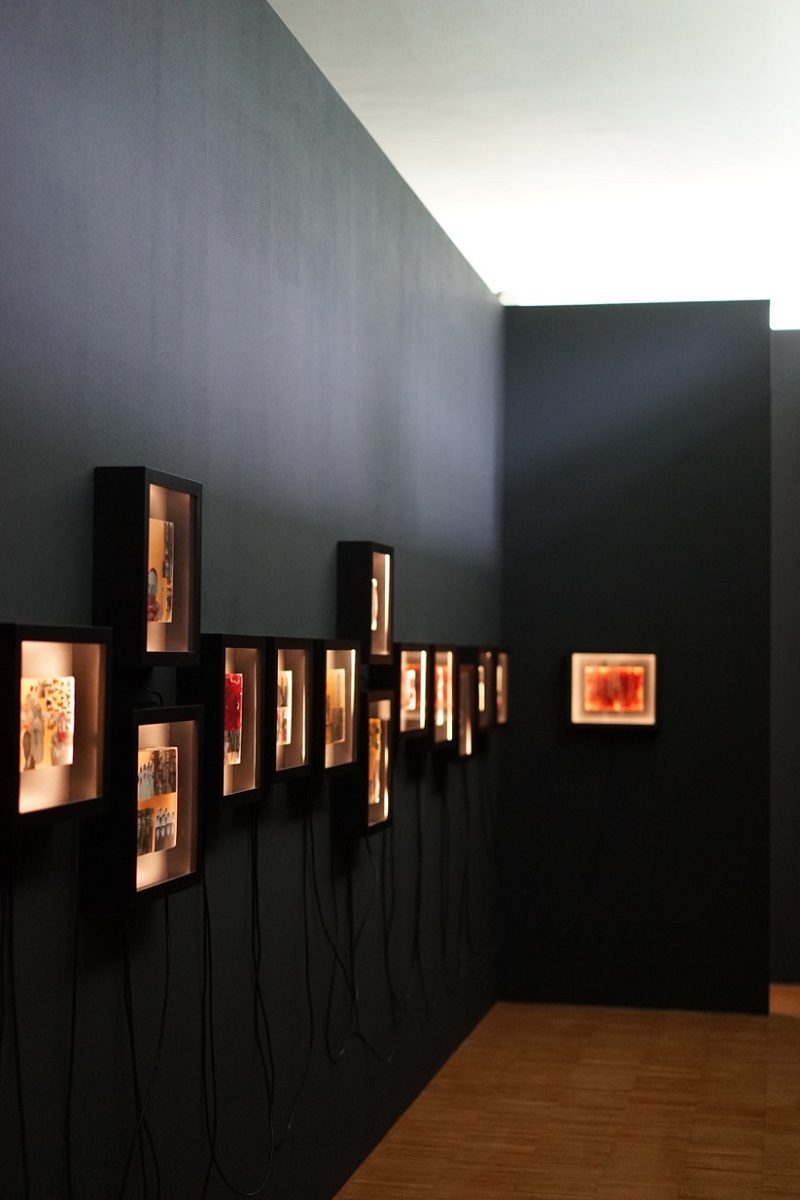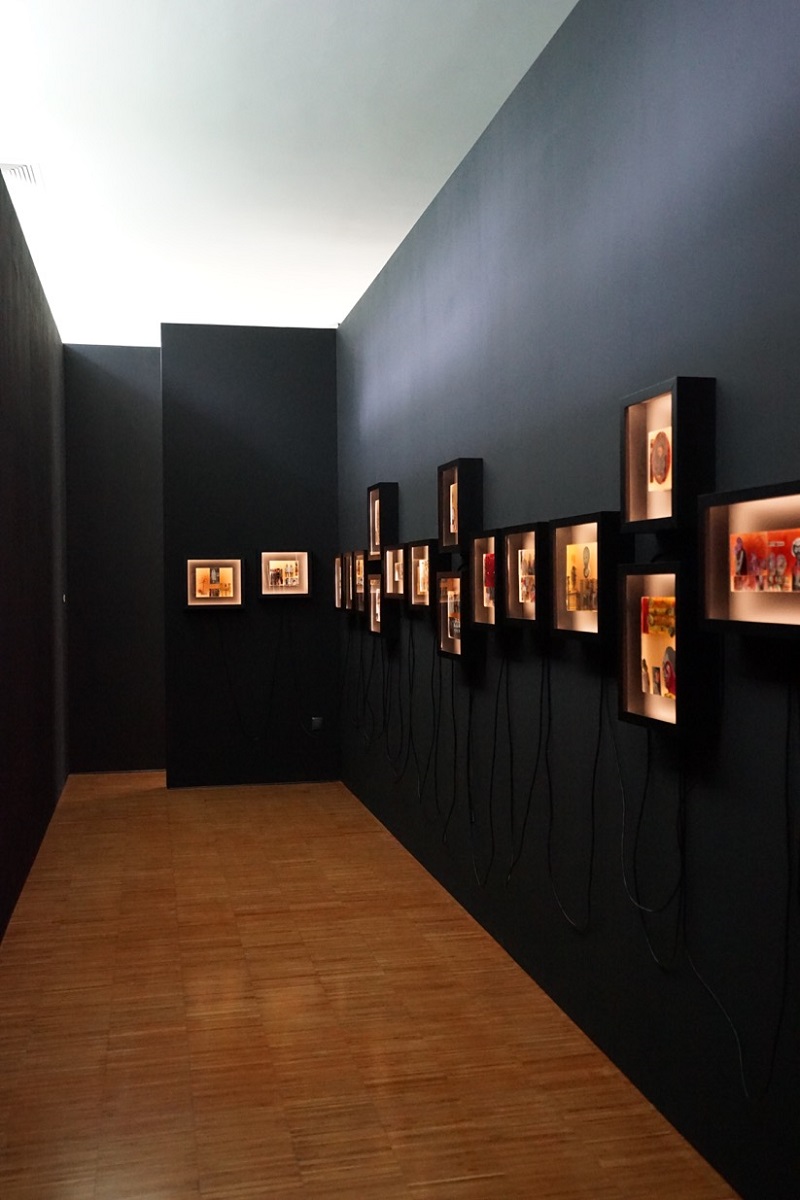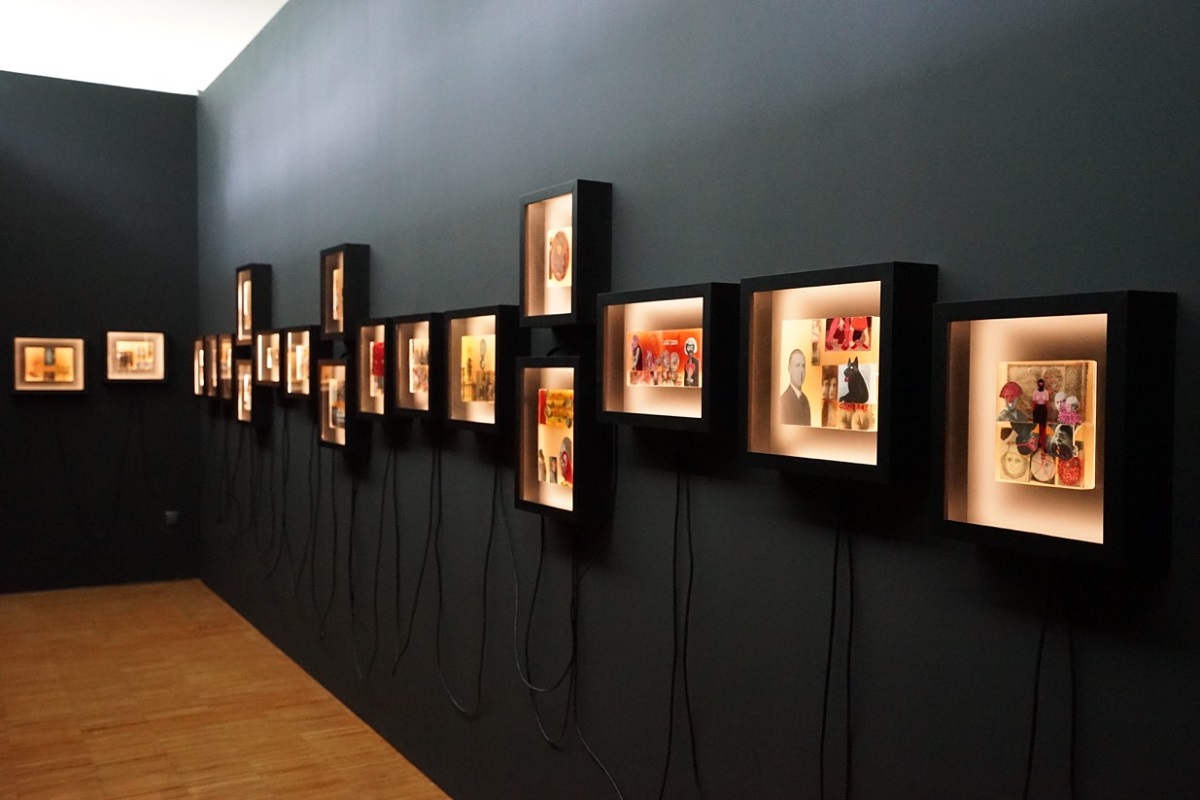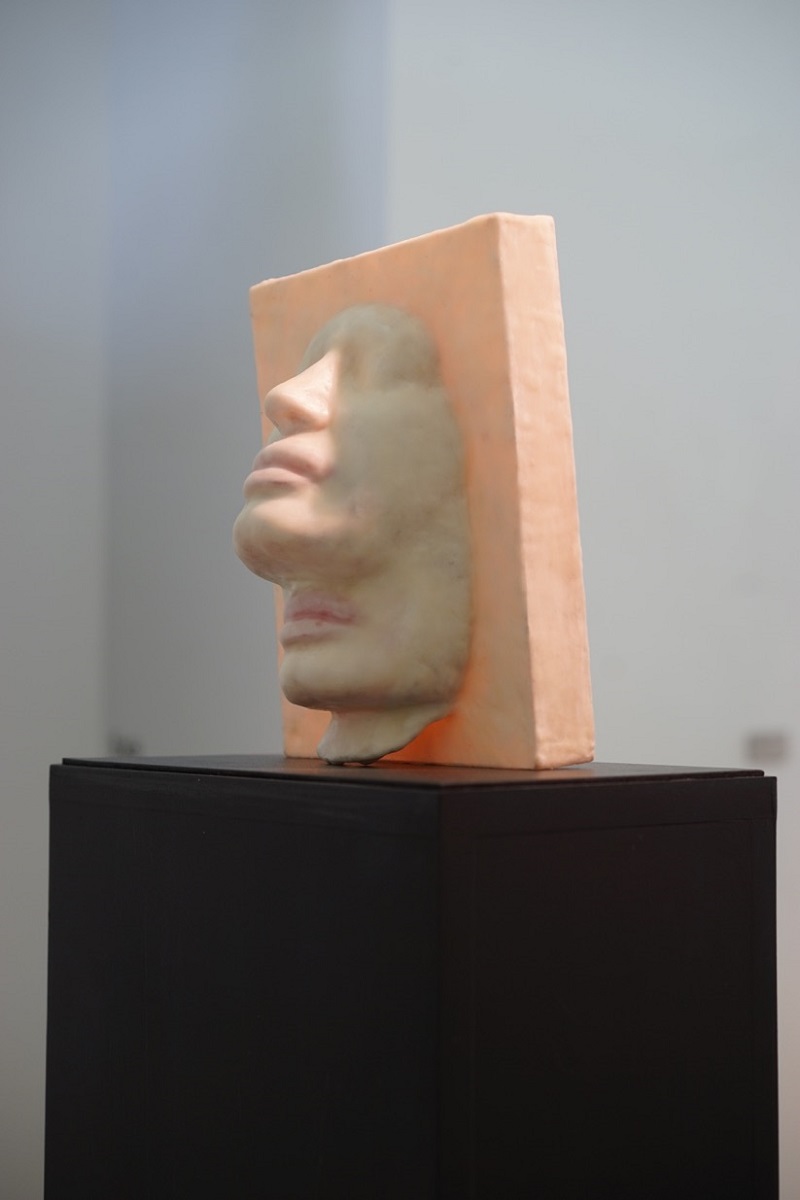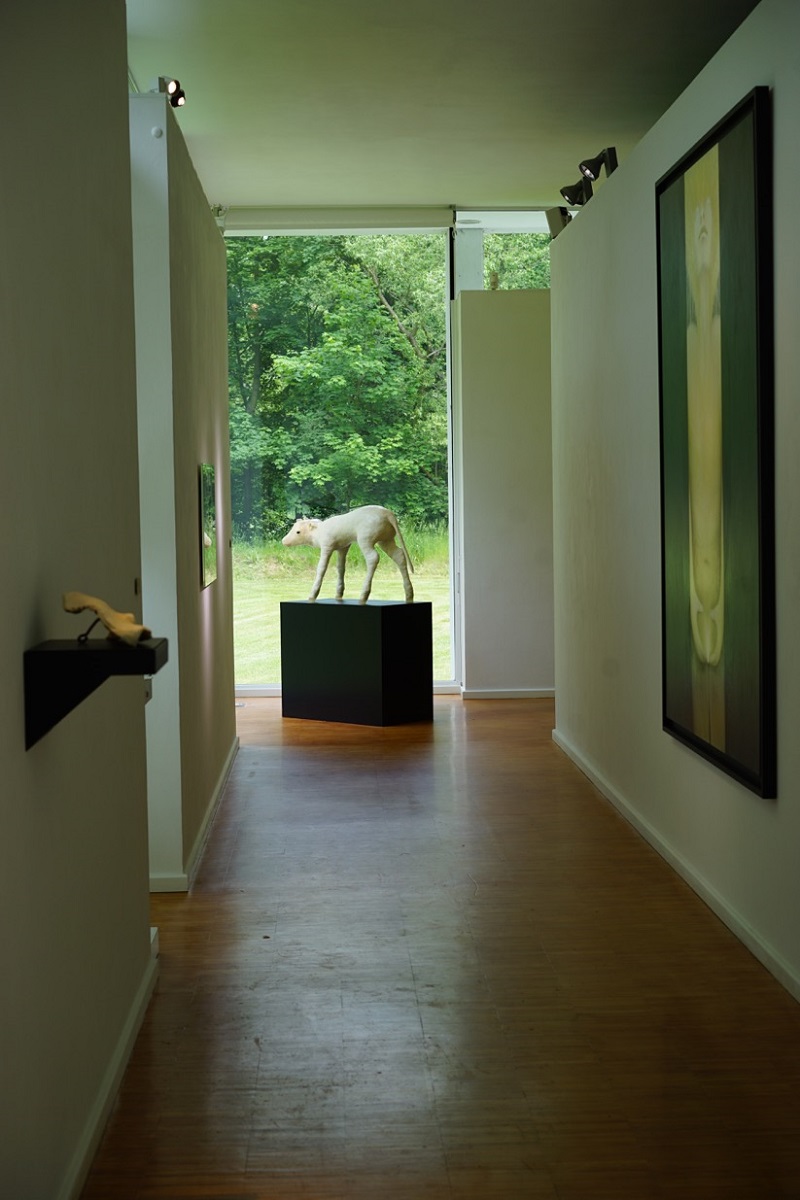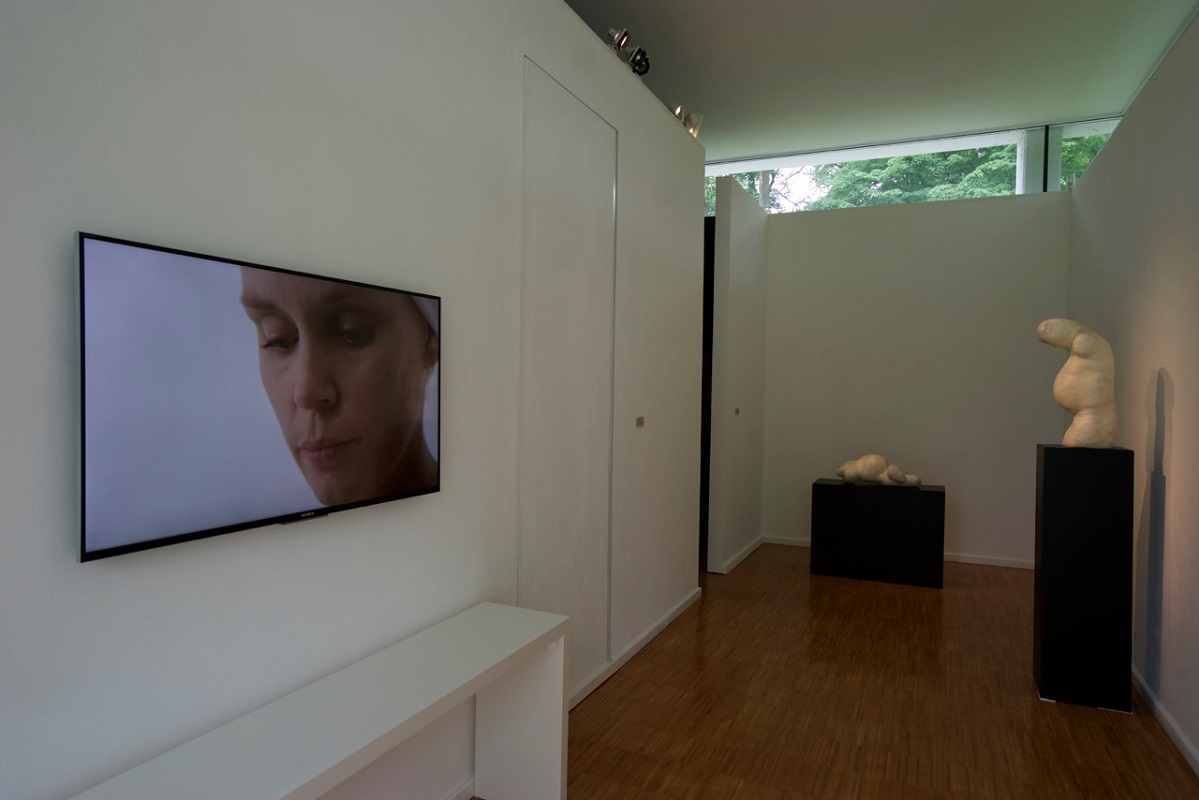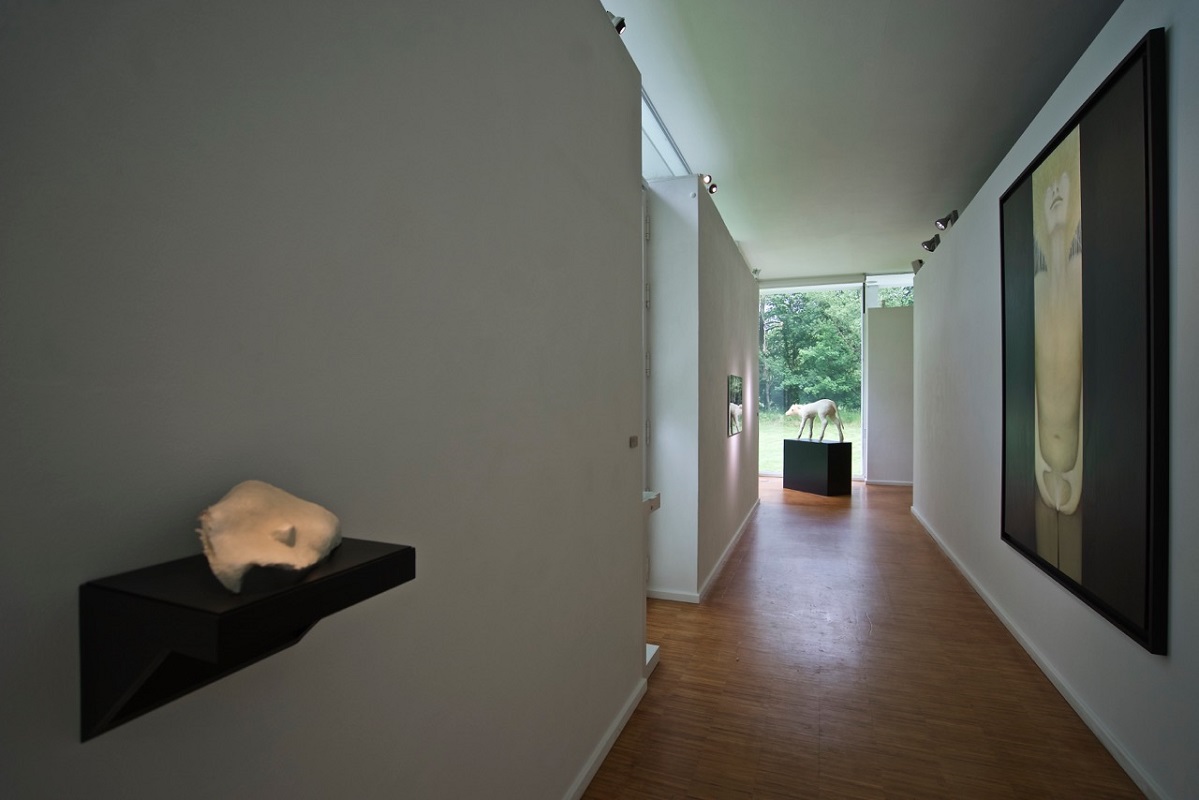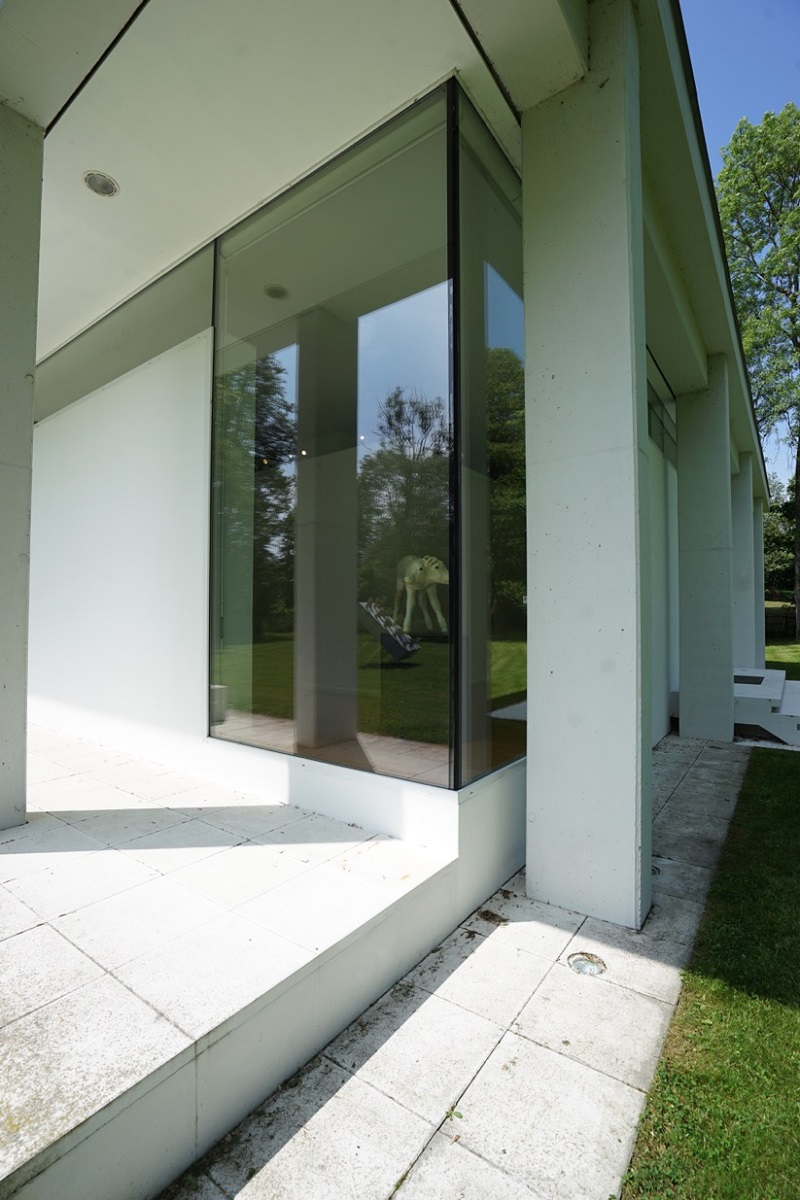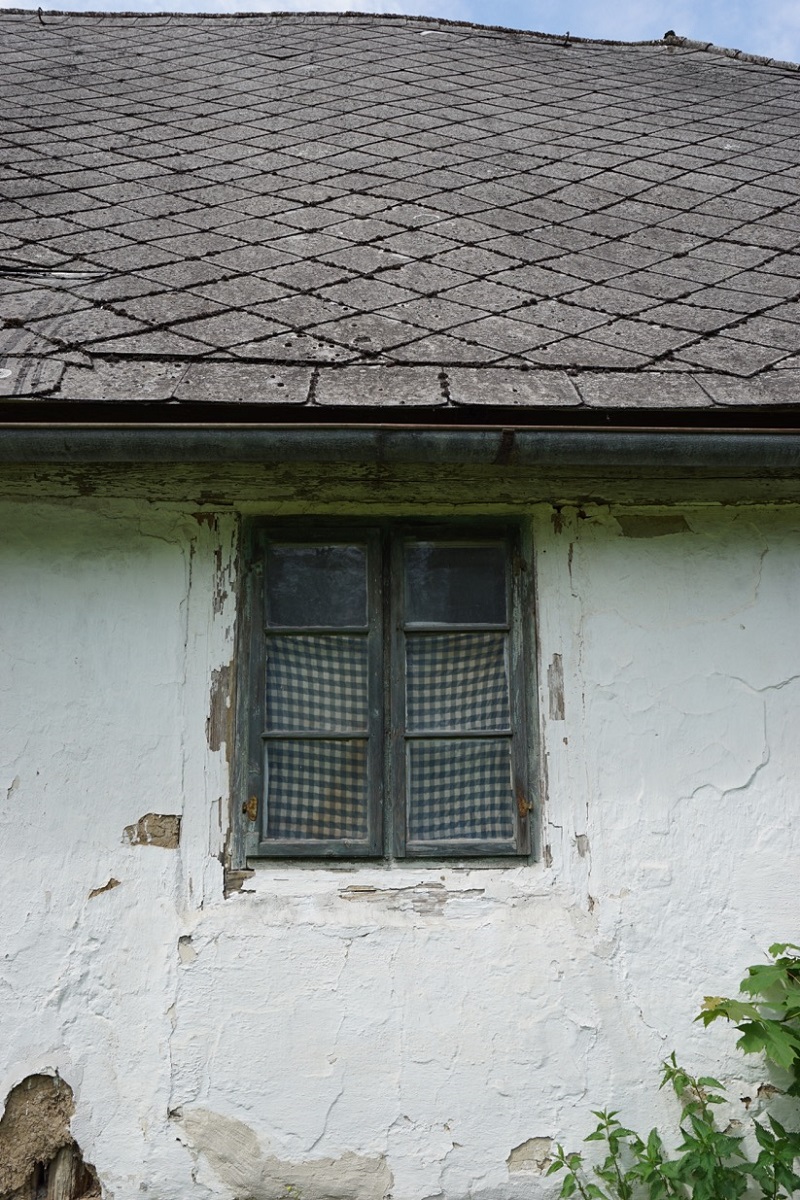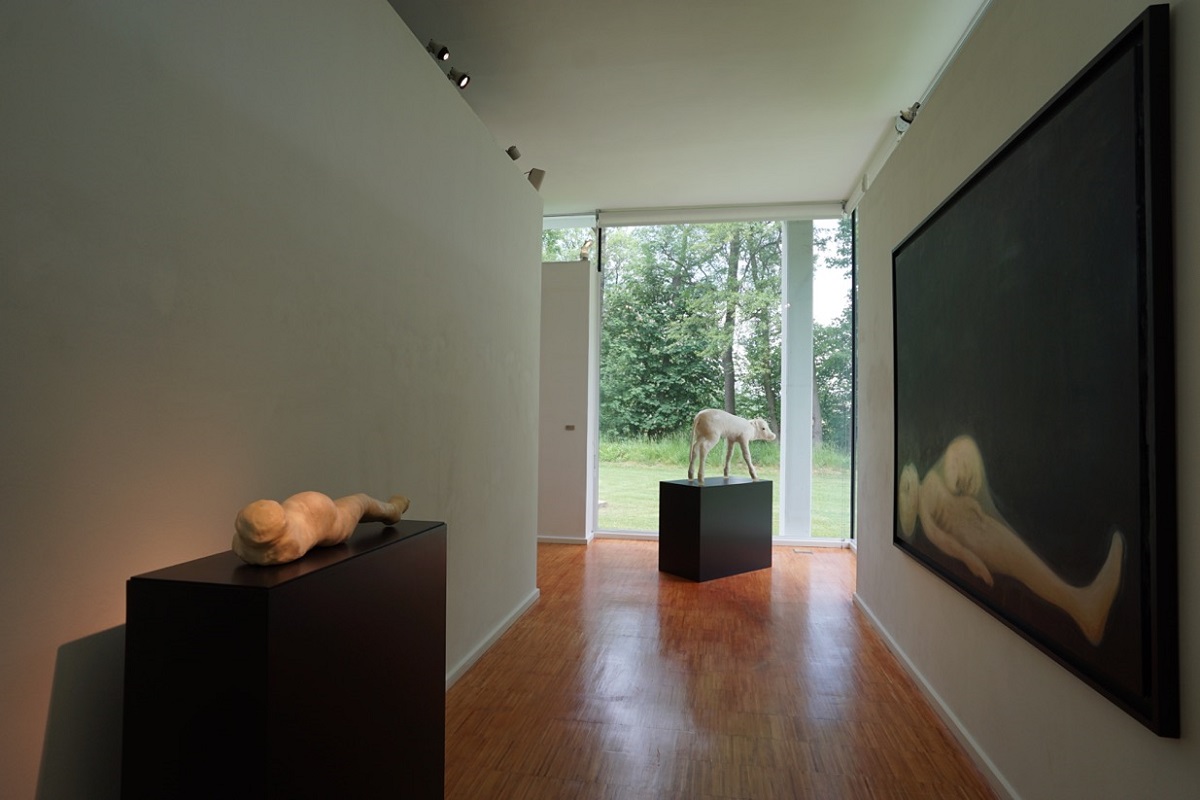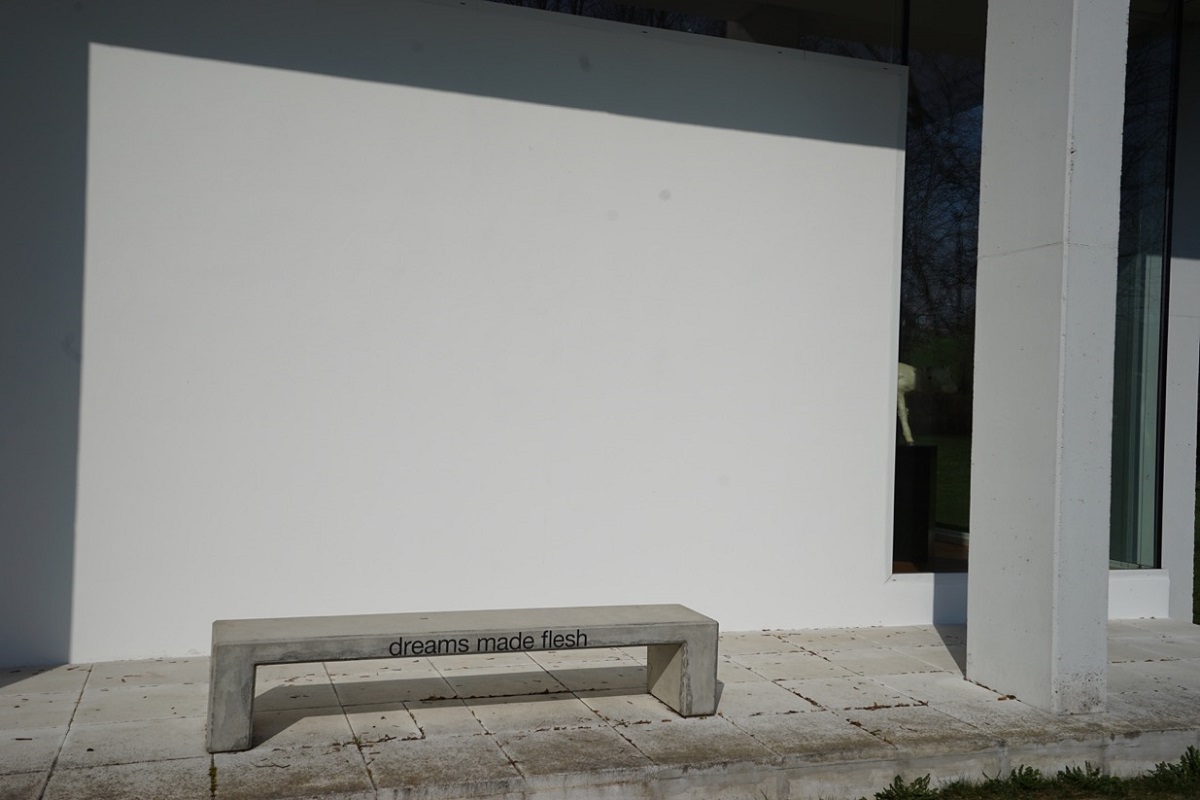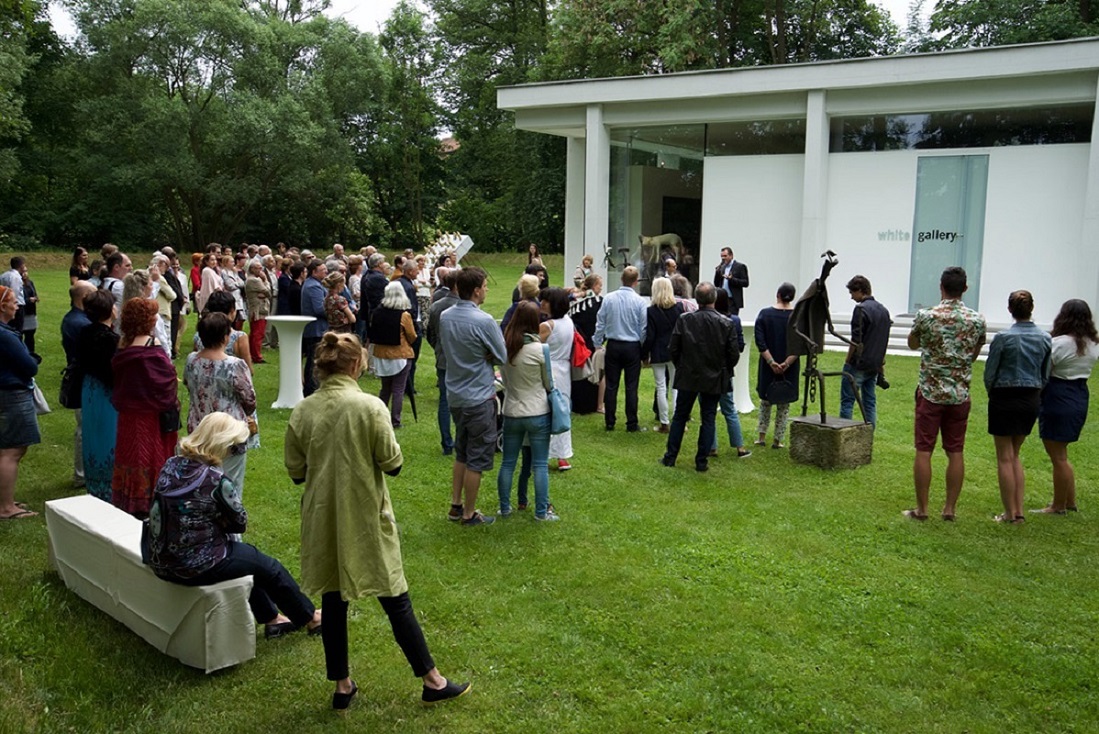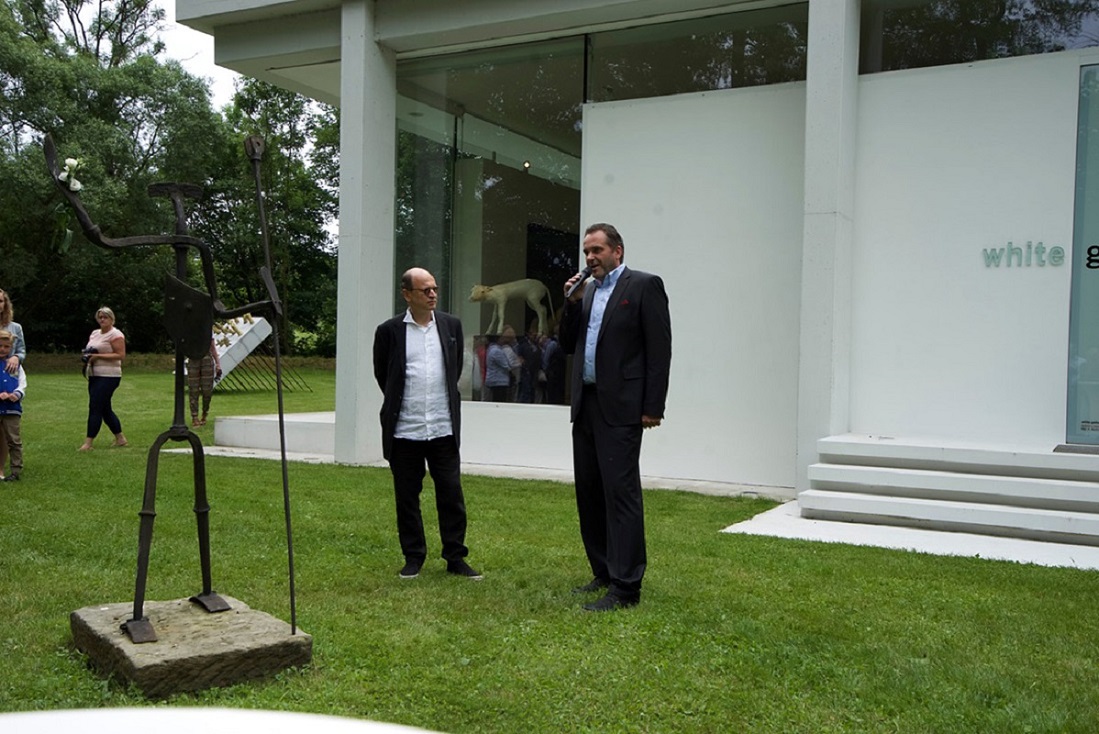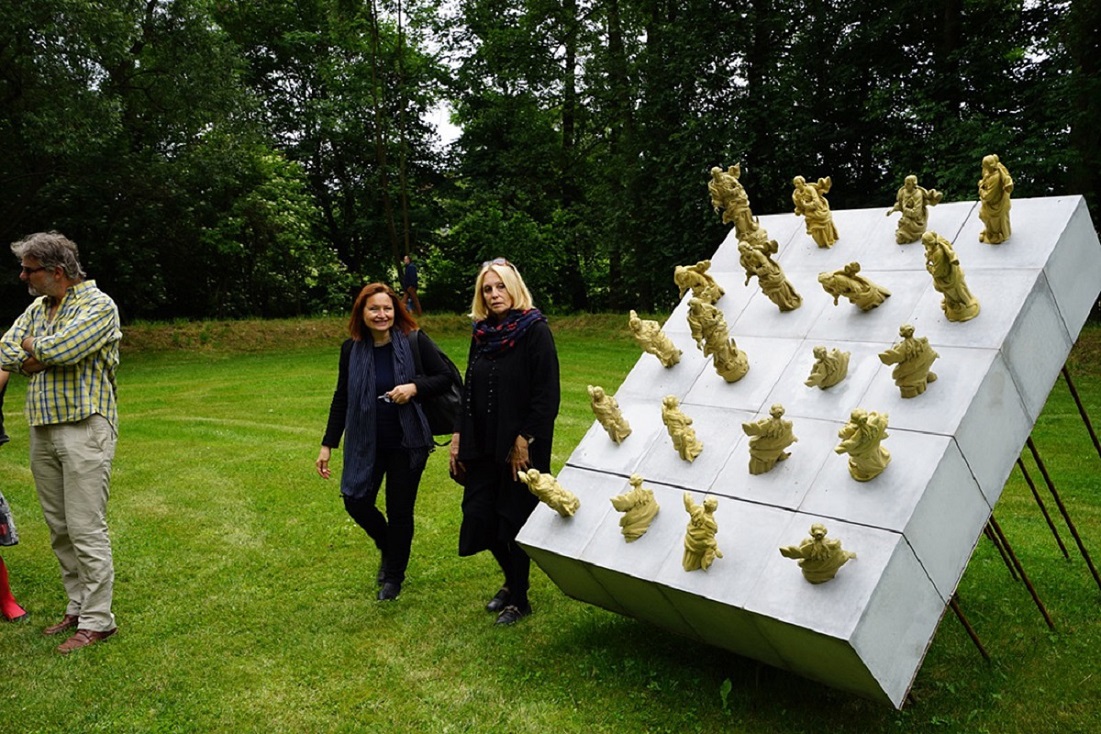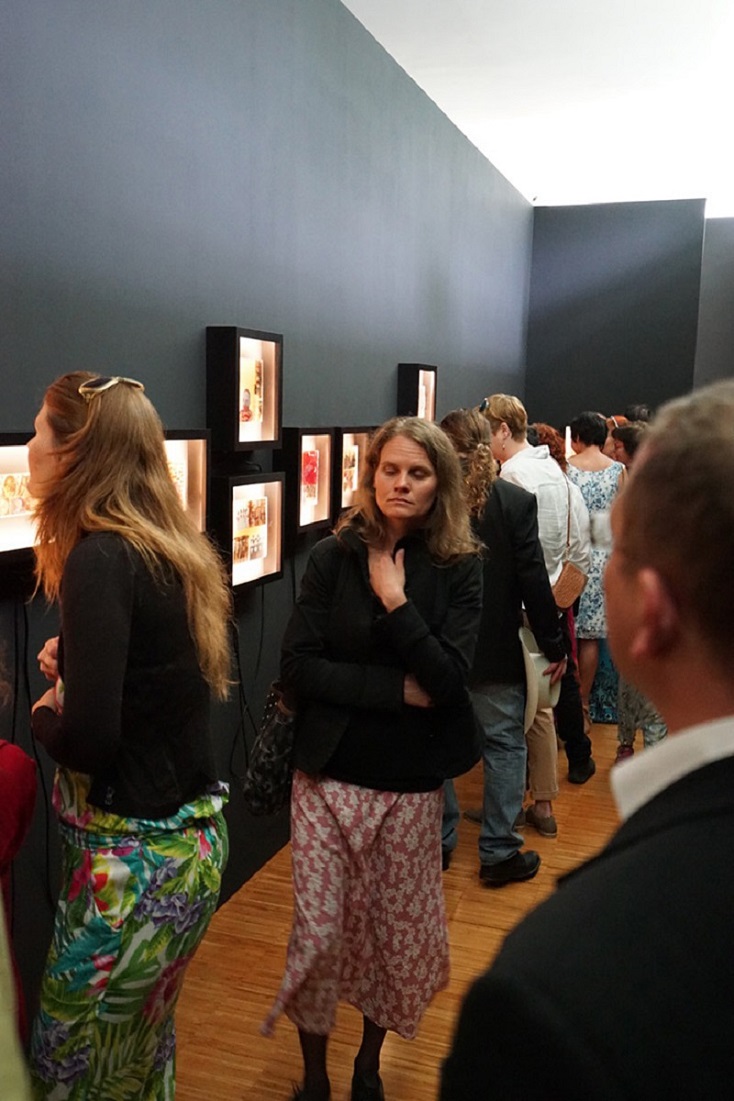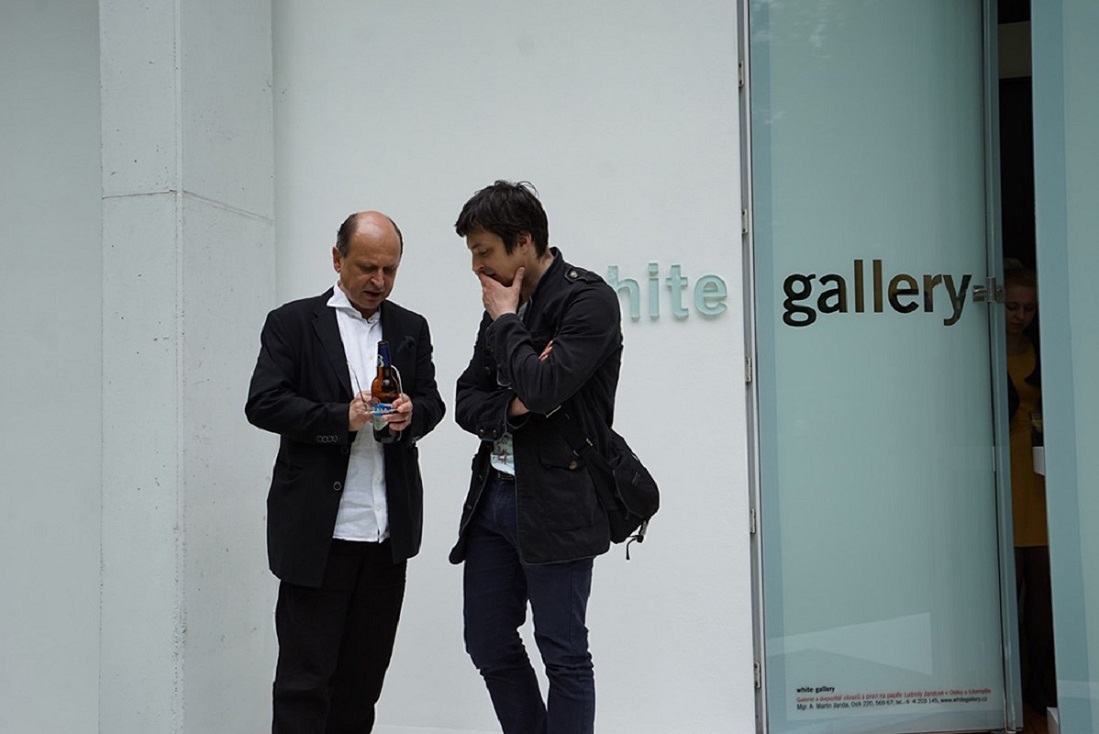Daniel Pešta – Záznamy noční hlavy
White Gallery – Osík u Litomyšle
Od roku 2010, kdy White Gallery vstoupila na výtvarnou scénu výstavou Stanislava Kolíbala, umožňuje svým návštěvníkům užívat si nevšední alternativu k velkým galerijním institucím, sídlícím v centrech metropolí, v podobě neobyčejných zážitků komorních výstav vsazených do stěn bělostně čisté architektury obklopené syrově krásnou přírodou českého venkova. Prostor, vymezující své území jen meandrující říčkou a vzrostlým stromovím, je prosycen kulturním duchem prostředí, které je do něj pozvolna vpisováno. Do povědomí kulturní veřejnosti se White Gallery zapisuje stále zřetelněji svou koncepcí, jež akcentuje vysoký důraz jak na samotný výběr vystavujících autorů, tak i na nebývale kvalitní realizace expozic. Po představení nejvýraznějších českých výtvarných klasiků konce 20. století si klade za cíl oslovit diváka díly autorů střední generace s jasně profilovanou tvorbou.
Výstavou Daniela Pešty White Gallery reaguje na největší přehlídku umění – Bienále v italských Benátkách 2015 –, odkud přebírá jeho okouzlující a zároveň děsivé objekty v projektu nazvaném Záznamy noční hlavy. Přenesení výstavy z Palazzo Bembo v centru Benátek do Osíka je doplněno řadou dalších děl, z nichž některá vznikají přímo pro výstavu ve White Gallery.
Základní myšlenkovou osu tvoří cyklus snově poetických asambláží, drsně semknutých v blocích více či méně transparentní pryskyřice, skrze niž Pešta divákům pootevírá náhled do svého podvědomí. V paralelních časových rovinách tvořených záblesky osobních vzpomínek překrývá výtvarné fragmenty příběhů a reflexí z nich vycházejících. Pracuje s dobovými fotografiemi z rodinných alb, kde jednotlivé snímky dále dotváří, smotává do ruliček, vrství, ovazuje pronikavě červenou nitkou, kterou často vyšívá obličejům náhubky nebo masky, a reaguje tím na bezmoc či vášeň zachycených osob, v níž jsou uvězněni. Příběh je reálně děsivý a jeho hloubku podtrhuje způsob adjustace, ve které autor pomocí světelných rámů nechává světlo do prostoru, z něhož divák díla vnímá, pronikat skrze díla samotná. Nespokojí se „pouze“ s tím, že by nasvětloval díla; pomocí jejich hloubky nasvětluje dílem diváka, který se tak stává součástí příběhu. Prostor asambláži je za tímto účelem semknut do uměle vytvořeného „black boxu“, který citlivě dotváří vnitřní výstavní dispozici architektury White Gallery a otvírá prostor pro zklidnění či spíše přimknutí diváka k dílu v nejintimnější části rafinované instalace. Protikladem setmělého prostoru je naopak zbylá část instalace obrazů a plastik, kterou vedle velkoformátových maleb a pocitově křehkých objektů z plátna a vosku, podtrhuje médium v podobě autorské videoprojekce. Videoartem, v němž Pešta otevírá svůj široký záběr multimediálního umělce svým brilantním zpracováním obrazu i zvuku, dokresluje celý koncept výstavy motivem dvou žen v pokročilém stádiu těhotenství, jež se vzájemně vzájemně zlehka vískají ve vlasech – obrazem křehkosti a jedinečnosti zrodu lidského života.
Jak tomu již v prostředí White Gallery bývá zvykem, výtvarný koncept přerůstá vnitřní dimenzi výstavního prostoru i do exteriéru. V případě Daniela Pešty se tak děje konceptuálním projektem Gravitation Zero II. K propojení vnitřní i venkovní instalace využívá autor voskový objekt dvouhlavého zvířete nazvaný Double Face, jímž otevírá myšlenku „noční“ snové schizofrenie. Brilantní vosková modelace plastiky dvouhlavého telete, umocněná průhledem, kde každá z hlav využívá samostatnou prosklenou plochu budovy, vzbuzuje silný emoční zážitek a podprahově vyvolává otázky, kam až může dojít umělá manipulace genomu a jeho zneužití.
Martin Janda, kurátor výstavy
|
Daniel Pešta – Nocturnal Head Records
White Gallery – Osík u Litomyšle
Since 2010, when the White Gallery made its debut on the Czech art scene with an exhibition of works by Stanislav Kolíbal, it has provided an alternative to large galleries in the center of big cities by offering visitors unusual experiences in the form of small-scale exhibitions installed on the walls of a pure white building surrounded by the beautiful raw nature of the Czech countryside. This space, delineated by a small meandering stream and luxuriant arboreal growth, is suffused with the cultural spirit of its surroundings, which it has absorbed with time. The White Gallery has increasingly become a part of the country’s cultural consciousness through its emphasis on not only the selection of exhibiting artists, but also through the exceptional quality of its exhibition design. After having exhibited the most distinctive legends of late 20th-century Czech art, the gallery has now made it its goal to present members from the middle generation of artists possessing a clearly defined body of work.
Daniel Pešta’s exhibition at the White Gallery is a continuation of his previous exhibition at the world’s largest art show, the Venice Biennale in 2015. Here in Osík, the enchanting and terrifying objects from Nocturnal Head Records, previously exhibited at the Palazzo Bembo in central Venice, are accompanied by numerous other works, some of them made especially for the exhibition at the White Gallery.
The exhibition’s central theme is reflected in a series of dreamlike poetic assemblages that have been roughly enclosed in blocks of more or less transparent resin, through which Pešta offers the viewer a glimpse into his subconscious. In parallel timelines consisting of flashes of personal memories, he layers the visual fragments of stories with the reflections that they inspire. Using period photographs from family albums, he further works the images by rolling them up, layering them, or tying them with a bright red thread that he often uses to stitch masks or muzzles onto the faces, thus responding to the helplessness or passion of the depicted individuals imprisoned within. The story is truly frightening, its profundity underscored by the manner in which the works are mounted – Pešta uses illuminated frames so that the light by which the viewer sees the work comes from the work itself. He is not “only” satisfied with illuminating the work; through their profundity, he uses the works to illuminate the viewers, making them a part of the story. To this end, the space in which the assemblages are exhibited is enclosed in an artificially created “black box” that sensitively adds to the White Gallery’s interior layout and creates a space for calming the viewer, or rather for drawing him into the work in this most intimate part of a sophisticated exhibition design. The rest of the exhibition, consisting of paintings and sculptures, forms an antithesis to this twilit space. Besides large-format paintings and emotionally fragile objects made of canvas and wax, this section also emphasis the artist’s use of media in the form of a video projection. In it, Pešta shows off his broad aptitude as a multimedia artist, making brilliant use of sound and video to underscore the exhibition’s main theme by working with the motif of two women in the advanced stages of pregnancy grooming each other’s hair – a picture of fragility and the uniqueness of the birth of human life.
As is the custom at the White Gallery, the exhibition expands beyond the confines of the building. In Pešta’s case, this happens through his conceptual work Gravitation Zero II. Here, Pešta connects the exhibition’s interior and exterior portions using a two-headed wax animal entitled Double Face that evokes the idea of the “nocturnal” schizophrenia of dreams. The brilliantly modelled two-headed wax calf, combined with how he uses the heads to frame the building’s glass surface, creates a strong emotional experience and subliminally evokes the question of how far artificial genetic manipulation can go, and how it might be abused.
Martin Janda, exhibition curator
|
